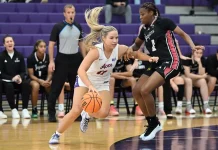
This is the kind of checklist that Investment Professionals Use, City of Evansville should Adapt to Public Projects where Taxpayers Pick Up the Tab
Sample Due Diligence (VETTING) Checklist
I. Financial Information
A. Annual and quarterly financial information for the past three years
1. Income statements, balance sheets, cash flows, and footnotes
2. Planned versus actual results
3. Management financial reports
4. Breakdown of sales and gross profits by:
a. Product Type
b. Channel
c. Geography
5. Current backlog by customer (if any)
6. Accounts receivable aging schedule
B. Financial Projections
1.Quarterly financial projections for the next three fiscal years
a. Revenue by product type, customers, and channel
b. Full income statements, balance sheets, cash
2. Major growth drivers and prospects
3. Predictability of business
4. Risks attendant to foreign operations (e.g., exchange rate fluctuation, government instability)
5. Industry and company pricing policies
6. Economic assumptions underlying projections (different scenarios based on price and market
fluctuations)
7. Explanation of projected capital expenditures, depreciation, and working capital arrangements
8. External financing arrangement assumption
C. Capital Structure
1. Current shares outstanding
2. List of all stockholders with shareholdings, options, warrants, or notes
3. Schedule of all options, warrants, rights, and any other potentially dilutive securities with exercise
prices and vesting provisions.
4. Summary of all debt instruments/bank lines with key terms and conditions
5. Off balance sheet liabilities
D. Other financial information
1. Summary of current federal, state and foreign tax positions, including net operating loss carryforwards
2. Discuss general accounting policies (revenue recognition, etc.)
3. Schedule of financing history for equity, warrants, and debt (date, investors, dollar investment,
percentage ownership, implied valuation and current basis for each round)
II. Products
A. Description of each product
1. Major customers and applications
2. Historical and projected growth rates
3. Market share
4. Speed and nature of technological change
5. Timing of new products, product enhancements
6. Cost structure and profitability
III. Customer Information
A. List of top 15 customers for the past two fiscal years and current year-to-date by application
(name, contact name, address, phone number, product(s) owned, and timing of purchase(s))
B. List of strategic relationships
(name, contact name, phone number, revenue contribution, marketing agreements)
C. Revenue by customer
(name, contact name, phone number for any accounting for 5 percent or more of revenue)
D. Brief description of any significant relationships severed within the last two years.
(name, contact name, phone number)
E. List of top 10 suppliers for the past two fiscal years and current year-to-date with contact
information
(name, contact name, phone number, purchase amounts, supplier agreements)
IV. Competition
A. Description of the competitive landscape within each market segment including:
1. Market position and related strengths and weaknesses as perceived in the market place
2. Basis of competition (e.g., price, service, technology, distribution)
V. Marketing, Sales, and Distribution
A. Strategy and implementation
1. Discussion of domestic and international distribution channels
2. Positioning of the Company and its products
3. Marketing opportunities/marketing risks
4. Description of marketing programs and examples of recent marketing/product/public
relations/media information on the Company
B. Major Customers
1. Status and trends of relationships
2. Prospects for future growth and development
3. Pipeline analysis
C. Principal avenues for generating new business
D. Sales force productivity model
1. Compensation
2. Quota Average
3. Sales Cycle
4. Plan for New Hires
E. Ability to implement marketing plan with current and projected budgets
VI. Management and Personnel
A. Organization Chart
B. Historical and projected headcount by function and location
C. Summary biographies of senior management, including employment history, age, service with
the Company, years in current position
D. Compensation arrangements
1. Copies (or summaries) of key employment agreements
2. Benefit plans
E. Discussion of incentive stock plans
F. Significant employee relations problems, past or present
G. Personnel Turnover
1. Data for the last two years
2. Benefit plans
VII. Legal and Related Matters
A. Pending lawsuits against the Company
(detail on claimant, claimed damages, brief history, status, anticipated outcome, and name of the
Company’s counsel)
B. Pending lawsuits initiated by Company
(detail on defendant, claimed damages, brief history, status, anticipated outcome, and name of
Company’s counsel)
C. Description of environmental and employee safety issues and liabilities
1. Safety precautions
2. New regulations and their consequences
D. List of material patents, copyrights, licenses, and trademarks
(issued and pending)
E. Summary of insurance coverage/any material exposures
F. Summary of material contacts
G. History of SEC or other regulatory agency problem, if any





LOL if you expect any City employee, Council Member or Advisory butt kisser to go to these lengths. Take ten or so of your favorite bullet points on this post and make a one sheet checklist. Hey, that’s ten things we’re not asking for today ! Boy that Kish is doing a great job, when will the Mayor come out with the announcement in support of Kish, similar to George Bush praising “Brownie” at FEMA for doing “a heck of a job” on Katrina ??
Comments are closed.